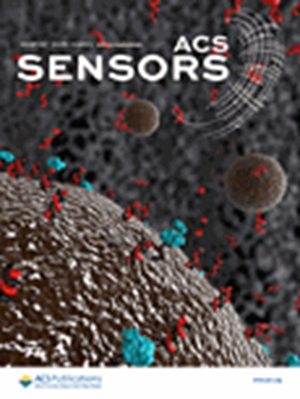Dual-Strain Adaptive Conductive Channels Conferred Sensing Rope with Ultrahigh Linearity, Wide Working Range, and Yoga-Asana-Monitoring Capability.
IF 8.2
1区 化学
Q1 CHEMISTRY, ANALYTICAL
引用次数: 0
Abstract
Wearable strain sensors exhibit great capability of detecting human joint activities, assisting rehabilitation training, and reflecting intelligent robots' operation. Abundant efforts regarding improving strain-sensor performance have predominantly focused on enhancing sensitivity or expanding sensing ranges but frequently neglected the importance of response-signal linearity, a key parameter for measurement accuracy. Herein, to suppress nonlinear resistance surge, dual-strain adaptive conductive channels constructed via braiding one polypyrrole/polyurethane filament (outer filament) with the other two (core filaments) into a reef knot structure are proposed. The structure discrepancy between the outer and core filaments confers the obtained reef knot sensing rope (RKSR) dual-strain response to stretching, inducing differential crack propagation on the PPy layers. The parallel connectivity of the outer and core filaments paves the way for the formation of adaptive conductive channels, which allows RKSR's resistance to increase linearly. The RKSR possesses excellent linearity (R2 = 0.998 for 0-100% strain and R2 = 0.999 for 0-600% strain), satisfactory detection limit (0.75-800%), great relative resolution (0.09375%), fast response time (120 ms), and favorable reciprocating stability (10,000 cycles). RKSR also adapts to various tensile rates (0.15-40 mm s-1) and can be integrated into yoga wear to monitor the postural compliance and respiratory patterns of practitioners during asana execution, signifying its potentially diverse applications (e.g., postsurgical rehabilitation and athletic assessment).双应变自适应导电通道赋予感应绳具有超高线性度,宽工作范围和瑜伽-体式监测能力。
可穿戴应变传感器在检测人体关节活动、辅助康复训练、反映智能机器人操作等方面具有很强的能力。在提高应变传感器性能方面的大量努力主要集中在提高灵敏度或扩大传感范围上,而往往忽视了响应信号线性度的重要性,而响应信号线性度是测量精度的关键参数。为了抑制非线性电阻浪涌,提出了将聚吡啶/聚氨酯丝(外丝)与其他两根(芯丝)编织成礁结结构的双应变自适应导电通道。外丝和芯丝之间的结构差异使所获得的礁结感应绳(RKSR)在拉伸时产生双应变响应,从而导致PPy层上的差异裂纹扩展。外丝和芯丝的平行连接为自适应导电通道的形成铺平了道路,这使得RKSR的电阻线性增加。RKSR具有良好的线性关系(0 ~ 100%菌株R2 = 0.998,0 ~ 600%菌株R2 = 0.999)、良好的检出限(0.75 ~ 800%)、较高的相对分辨率(0.09375%)、快速的响应时间(120 ms)和良好的往复稳定性(10,000循环)。RKSR还可以适应不同的拉伸速率(0.15-40 mm s-1),可以集成到瑜伽服中,以监测体式执行过程中练习者的姿势顺应性和呼吸模式,这表明其潜在的多种应用(例如,术后康复和运动评估)。
本文章由计算机程序翻译,如有差异,请以英文原文为准。
求助全文
约1分钟内获得全文
求助全文
来源期刊

ACS Sensors
Chemical Engineering-Bioengineering
CiteScore
14.50
自引率
3.40%
发文量
372
期刊介绍:
ACS Sensors is a peer-reviewed research journal that focuses on the dissemination of new and original knowledge in the field of sensor science, particularly those that selectively sense chemical or biological species or processes. The journal covers a broad range of topics, including but not limited to biosensors, chemical sensors, gas sensors, intracellular sensors, single molecule sensors, cell chips, and microfluidic devices. It aims to publish articles that address conceptual advances in sensing technology applicable to various types of analytes or application papers that report on the use of existing sensing concepts in new ways or for new analytes.
 求助内容:
求助内容: 应助结果提醒方式:
应助结果提醒方式:


